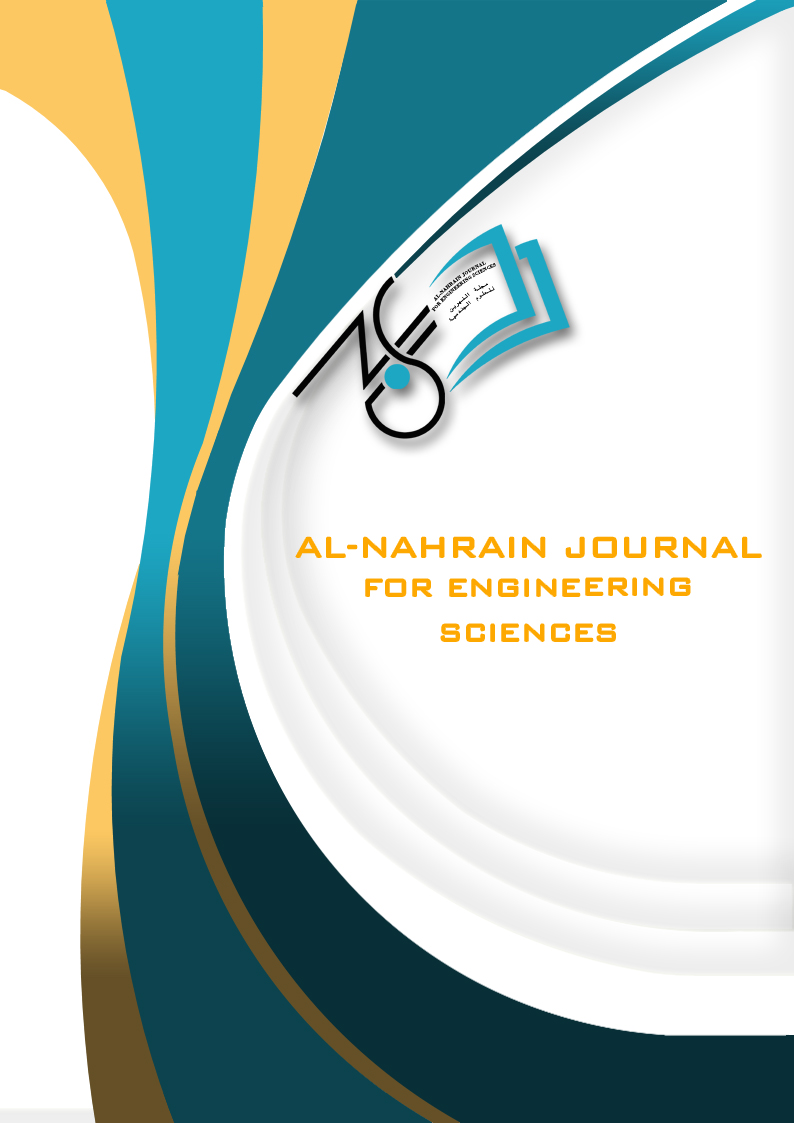Design of Reverse Osmosis Water Treatment Unit Using Lanxess Lewaplus2
DOI:
https://doi.org/10.29194/NJES.28010008Keywords:
Reverse Osmosis, Minitab, Lewaplus2, Process designAbstract
Basrah is the richest town and the economic capital of Iraq. It suffers from lack of drinking water. This project is a dream to supply drinking water to Basrah citizens within WHO standards. Water should pass sedimentation and filtration stages before interring reverse osmosis unit. The design is carried out using lewaplus2 software. Several parameters should be selected in the design step membrane type, number of stages, number per element in each stage, and the recovery percentage. An optimization is carried out using Minitab ver. 18 for the acceptable limit of TDS and minimum cost and it was found that the optimum conditions were 52% for first stage, the numbers of vessels are 20 for both the first and second stage. In addition, results showed that the pressure and the total dissolved solid increase with increasing the recovery while parameters like the feed flow rate per vessel, the power, and the cost are decreasing with the recovery. Mathematical model described the cost was conducted and statistical study was also done to ensure the results.
Downloads
References
J. Hollman, M. F. Khan, J. A. Dominic, and G. Achari, “(ASCE)EE.1943-7870.0001777,” J. Environ. Eng., vol. 146, no. 11, p. 04020121, 2020. [Online]. Available: https://doi.org/10.1061/(ASCE)EE.1943-7870.0001777 DOI: https://doi.org/10.1061/(ASCE)EE.1943-7870.0001777
X. Peng, Y. Jiang, Z. Chen, A. I. Osman, M. Farghali, D. W. Rooney, and P.-S. Yap, "Recycling municipal, agricultural and industrial waste into energy, fertilizers, food and construction materials, and economic feasibility: a review," Environmental Chemistry Letters, vol. 21, pp. 765–801, 2023. [Online]. Available: https://doi.org/10.1007/s10311-022-01551-5. DOI: https://doi.org/10.1007/s10311-022-01551-5
M. V. Christiansen, T. B. Pedersen, J. N. Brønd, L. H. Skibsted, and L. Ahrné, “Physical properties and storage stability of reverse osmosis skim milk concentrates: Effects of skim milk pasteurisation, solid content and thermal treatment,” J. Food Eng., vol. 278, p. 109922, 2020. [Online]. Available: https://doi.org/10.1016/j.jfoodeng.2020.109922 DOI: https://doi.org/10.1016/j.jfoodeng.2020.109922
S. N. Moejes, G. J. van Wonderen, J. H. Bitter, and A. B. van Boxtel, “Assessment of air gap membrane distillation for milk concentration,” J. Membr. Sci., vol. 594, p. 117403, 2020. [Online]. Available: https://doi.org/10.1016/j.memsci.2019.117403 DOI: https://doi.org/10.1016/j.memsci.2019.117403
A. Bottino, G. Capannelli, A. Turchini, P. Valle, and M. Trevisan, “Integrated membrane processes for the concentration of tomato juice,” Desalination, vol. 148, pp. 73–77, Sep. 2002. [Online]. Available: https://doi.org/10.1016/S00119164(02)00656-2 DOI: https://doi.org/10.1016/S0011-9164(02)00656-2
D.-Q. Cao et al., “Separation of trace pharmaceuticals individually and in combination via forward osmosis,” Sci. Total Environ., vol. 718, p. 137366, 2020. [Online]. Available: https://doi.org/10.1016/j.scitotenv.2020.137366 DOI: https://doi.org/10.1016/j.scitotenv.2020.137366
J. Hu et al., “An integrated process for the advanced treatment of hypersaline petrochemical wastewater: A pilot study,” Water Res., vol. 182, p. 116019, 2020. [Online]. Available: https://doi.org/10.1016/j.watres.2020.116019
M. Mukiibi, “Reverse osmosis – Opportunities and challenges,” Water Conditioning & Purification Mag., Nov. 2008. [Online]. Available: https://wcponline.com/2008/11/21/reverse-osmosischallenges-opportunities-2/
H. A. Maddah et al., “Evaluation of various membrane filtration modules for the treatment of seawater,” Appl. Water Sci., vol. 8, no. 6, p. 150, 2018. [Online]. Available: https://doi.org/10.1007/s13201-018-0793-8 DOI: https://doi.org/10.1007/s13201-018-0793-8
M. Wilf and K. Klinko, “Optimization of seawater RO systems design,” Desalination, vol. 138, pp. 299–306, Mar. 2005. [Online]. Available: https://doi.org/10.1016/S0011-9164(01)00278-8 DOI: https://doi.org/10.1016/S0011-9164(01)00278-8
Balance, Material, Permeate Blending, Feed Water, Permeate Recirculation, Water Analysis, Basic Equations, RO Calculations, et al., no date.
M. Al-Shammiri and M. Al-Dawas, “Maximum recovery from seawater reverse osmosis plants in Kuwait,” Desalination, vol. 110, no. 1, pp. 37–48, 1997. [Online]. Available: https://doi.org/10.1016/S0011-9164(97)00082-9. DOI: https://doi.org/10.1016/S0011-9164(97)00082-9
“Guidance and recommendations for post-treatment,” no date. [Online]. Available: https://doi.org/10.1016/j.watres.2020.116019 DOI: https://doi.org/10.1016/j.watres.2020.116019
M. Khraisheh et al., “Osmotic pressure estimation using the Pitzer equation for forward osmosis modeling,” Environ. Technol., vol. 41, pp. 1–22, Jan. 2019. DOI: https://doi.org/10.1080/09593330.2019.1575476
I. Al-Mutaz, “Water desalination in the Arabian Gulf region,” Water Purification, vol. 2, pp. 245–265, Jan. 2000.
Downloads
Published
Issue
Section
License
Copyright (c) 2025 Khalid M. Mousa Al-zobai, Saad Ali Ahmed

This work is licensed under a Creative Commons Attribution-NonCommercial 4.0 International License.
The authors retain the copyright of their manuscript by submitting the work to this journal, and all open access articles are distributed under the terms of the Creative Commons Attribution-NonCommercial 4.0 International (CC-BY-NC 4.0), which permits use for any non-commercial purpose, distribution, and reproduction in any medium, provided that the original work is properly cited.














